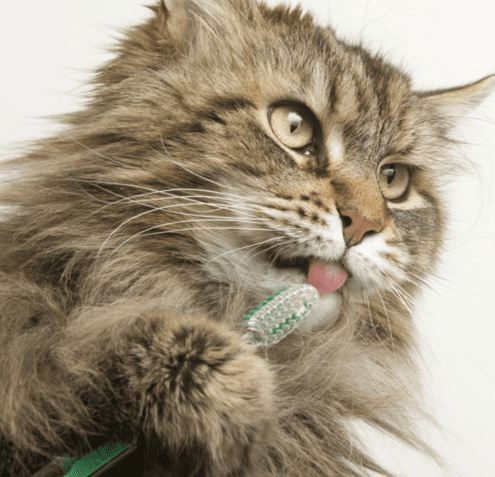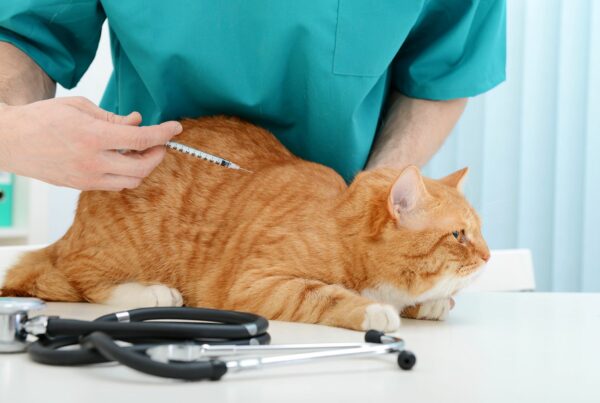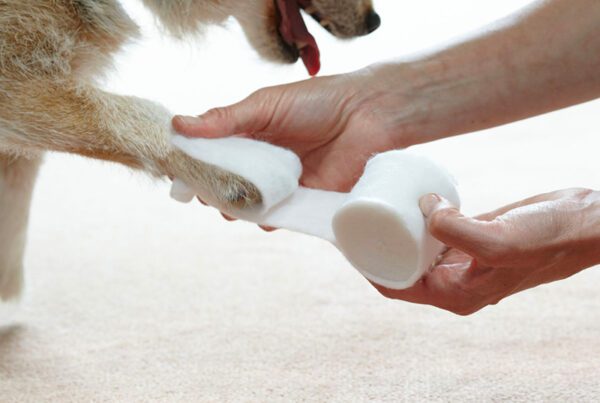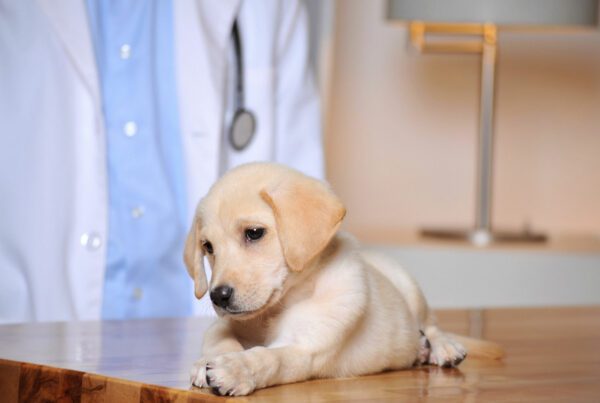Dental disease is one of the most common problems in cats and dogs. It can be the cause of bad breath, bleeding gums and chronic pain but can also be a source of infection which can spread to other parts of the body including kidneys, liver and the heart.
The early stages of the disease can be reversed by good oral hygiene including tooth brushing (not impossible in cats!), descaling and use of dental diets. For more advanced cases the only successful method of treatment may be to remove the teeth. Although this may seem drastic many cats are a lot happier after this procedure and will eat biscuits very happily!
Why does dental disease happen?
Without regular cleaning, teeth will become coated in a layer of plaque which is a mixture of bacteria and calcium deposits that are present in saliva.
As the plaque accumulates it can lead to painful inflammation of the gums also known as gingivitis. If left undisturbed it will form a layer of calculus or tartar which provides a perfect surface for more plaque accumulation.
Plaque, tartar and gum disease can be treated relatively easily, however if left unchecked may lead to loosening of teeth in their sockets (periodontal disease) and in some circumstances tooth root abscesses. These problems will generally require removal of the affected tooth as part of the treatment.
Broken teeth generally occur due to trauma and cats may also get tiny holes in their teeth which can be extremely painful.
How do I know if my pet has dental disease?
- Red, swollen or bleeding gums
- Pus around the gum lines
- Bad breath
- Dribbling (which can lead to fur staining)
- Rubbing or pawing at the mouth
- Difficulty eating
- Pet will not allow mouth examination due to pain or discomfort
Remember: Pain is not always obvious in cats and dogs but it doesn’t mean it isn’t present
What does dental treatment consist of?
In most cases if your vet advises you that your pet needs dental treatment, this will involve a general anaesthetic.
Removal of tartar and plaque from teeth generally requires the use of high speed air driven descaling equipment. The majority of our pets will not tolerate this when they are conscious, neither will they allow drilling or tooth removal!
A general anaesthetic means that the vet can have good access to the teeth and gums whilst protecting the pet’s airway from debris and fluid as the teeth are cleaned. The teeth will be descaled to remove the tartar and reveal any damaged or loose teeth that may need to be taken out. Finally they will be polished before the animal is woken up.
Dental disease in cats
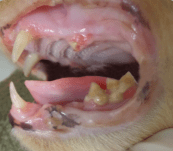
Gingivostomatitis (inflammation of the gums) is a common disease in cats. It is a very painful condition and can result in severe changes within the mouth. Bad breath and weight loss are two common signs but unfortunately mean that the disease may be quite advanced by the time this is noticed. Red marks on the gums are a sign of gum disease, as shown in this image.
FORLS (Resorptive Lesions) – These are very painful small holes that appear in the teeth of some cats. It is not clear why they occur but teeth will always need attention if they are present.
How to brush your pet’s teeth
Step 1
Introduce your pet to the taste of special animal toothpaste by allowing them to lick it off your finger. Make this an enjoyable experience and give them plenty of praise. Do this for 3-5 days
Step 2
Use your finger to gently rub some toothpaste onto the outside surfaces of the teeth and gums. Start with the canines and gradually work your way to the back teeth. After a few days you can also start to introduce a finger brush to get your pet used to having an unusual object in their mouths.
Step 3
Use your finger to gently rub some toothpaste onto the outside surfaces of the teeth and gums. Start with the canines and gradually work your way to the back teeth. After a few days you can also start to introduce a finger brush to get your pet used to having an unusual object in their mouth
Now you can introduce a pet toothbrush. Brush each tooth in a circular motion with the brush angled at 45 degrees (downwards for the lower jaw and upwards for the upper jaw). Make sure you brush both the tooth and gum line.
It is very important to pay close attention to the health of your pet’s teeth and gums. If dental disease is overlooked or left untreated your pet may experience significant pain and discomfort. There are many ways to keep teeth clean. These include tooth brushing, dental diets and mouth washes to name a few. Please ask your veterinary practice if you would like to arrange a dental check for your pet, or for any further information on home dental care.

